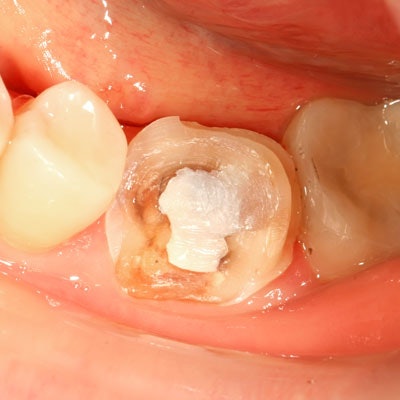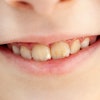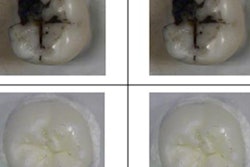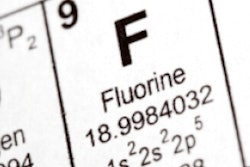
Can the application of silver diamine fluoride (SDF) affect restoration bond strength? The results are mixed, according to a new systematic review published in the International Journal of Paediatric Dentistry.
The findings suggest that previous SDF application may affect resin composite adhesive systems but not glass ionomer cement. Fortunately, any negative effects appear to be mitigated by rinsing SDF before restoration placement.
"The present systematic review showed that the prior application of silver diamine fluoride does not negatively influence the bond strength of glass ionomer cement to dentin," wrote the authors, led by Tatiana Tambara Fröhlich, a dental science graduate student at the Federal University of Santa Maria in Santa Maria, Brazil (Int J Paediatr Dent, August 15, 2019). "Nevertheless, it can impair the bond strength of adhesive systems to dentin. Rinsing SDF off seems to eliminate this adverse effect."
“The prior application of silver diamine fluoride does not negatively influence the bond strength of glass ionomer cement to dentin.”
The authors searched the scientific literature for studies that assessed the bond strength of glass ionomer cement and adhesive systems/resin composite to dentin that had been previously treated with SDF. They included 11 studies in the review and 10 in the meta-analysis.
Prior application of SDF does not appear to compromise the bond of glass ionomer cement to dentin, the review found. In fact, pretreatment with SDF may boost the bond strength of glass ionomer cement.
"The bonding mechanism of glass ionomer cement is based on a chemical reaction between polyacrylic acid from glass ionomer and calcium ions (from hydroxyapatite mainly)," the authors wrote. "Previous application of SDF on dentin surface results in silver deposits and silver oxide that could improve the bonding of glass ionomer."
The same was not true for resin adhesive systems. Previous SDF application significantly weakened the bond strength, the researchers found. However, the effect appeared to be mitigated by rinsing SDF before placing the restoration.
"The rinsing seems to be able to eliminate the excess of silver precipitate from peritubular and intertubular dentin favoring the adhesion," the authors wrote. "The beneficial effect of the rinsing step was also observed in the subgroup meta-analyses of the glass ionomer cement, which showed higher bond strength values compared to control when the SDF was rinsed after application."
It is important to note that the majority of studies in the review used 38% SDF, as opposed to the lower 12% formulation. The authors cautioned more studies are needed that focus on primary molars and also evaluate the long-term effects.
"Despite the beneficial effect of the SDF on arresting caries, it should be noted that the application of SDF to prevent recurrent caries is a new and off-label use," they wrote. "Therefore, few studies evaluating its effect on bond strength of restorative materials are available, and this explains the number of eligible studies included in the present systematic review."



















